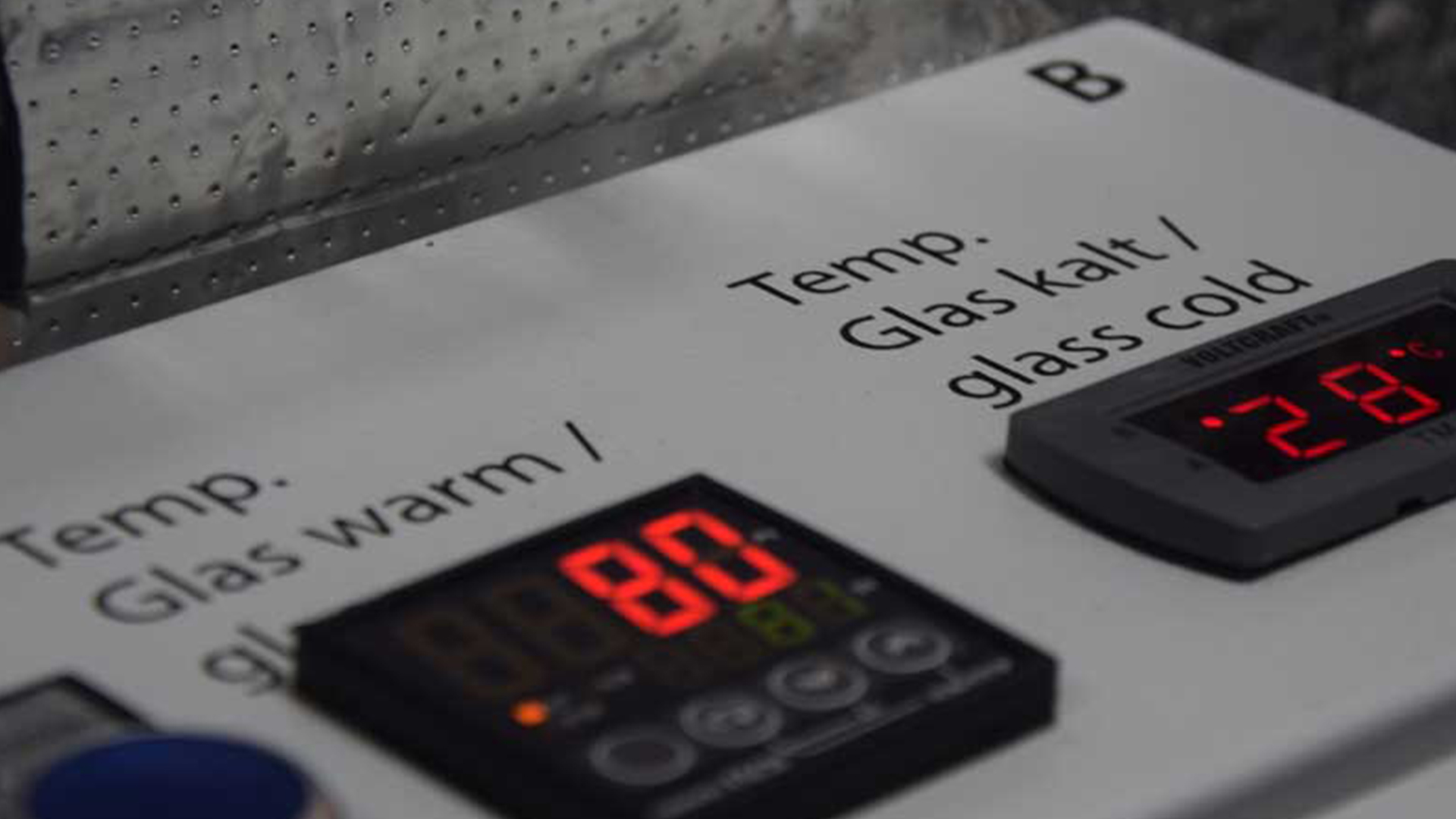It is used at regular intervals: our in-house fogging box. EK Quality Assurance uses it to ensure that no unacceptable condensation is trapped in the interpane space, a phenomenon known as ‘fogging’, caused by the outgassing of volatile organic compounds from steel or plastic, for instance. EK Connect spoke to Remigiusz Zamaro, the contact person in EK’s Application Technology department for the Glass business unit, about the construction and operation of the box.
Mr. Zamaro, what prompted you to construct a fogging test chamber for EK’s own use?
We initially had the idea of carrying out our own fogging test in accordance with DIN EN 1279-4:2018, Annex C, as part of EK’s in-house production control. But because you need a fogging test chamber to carry out the test, as project manager, I decided to sound out the market. In the end, we decided to build one ourselves, including the associated electronics. It goes without saying, of course, that it was constructed precisely in accordance with the specifications of the DIN standard I just mentioned..
That means the entire testing process is subject to a strict standard?
That’s absolutely correct. But to provide our customers with a guarantee of even greater certainty and reliability, we increased the test temperatures from 60° to 80° Celsius based on ift Guideline VE-07/3 of 2018, because the risk of outgassing can increase as the ambient temperature rises. In addition to the assembled connectors, we always add further loose products to the inter-pane space in order to additionally stimulate possible outgassing. As you can see, we test our products most thoroughly, of course, which is why we are able to guarantee their high quality. After a total of seven days in the fogging box, the test units are inspected for condensation in an inspection box, which also meets the requirements of the standard.
And now it’s the turn of the EK Quality Assurance department?
After the first few trials, a number of final optimizations were made and then we handed over the fogging box including work instructions, test plans and certificates to the EK Quality Assurance department. For each test, new insulating glass units with EK products installed are requested from reputable IG producers and manufactured for EK in accordance with the DIN standard. This ensures that all components of the insulating glass units are tested and do not outgas.
To date, all EK products made of steel and plastic have been tested negatively, i.e. absence of fogging, each of which is confirmed by means of a test certificate! Incidentally, we also carry out regular fogging tests at the independent Center for Engineering Materials of MPA-IfW Darmstadt, which thus confirms the fog-free nature of the materials used in EK products at all times.
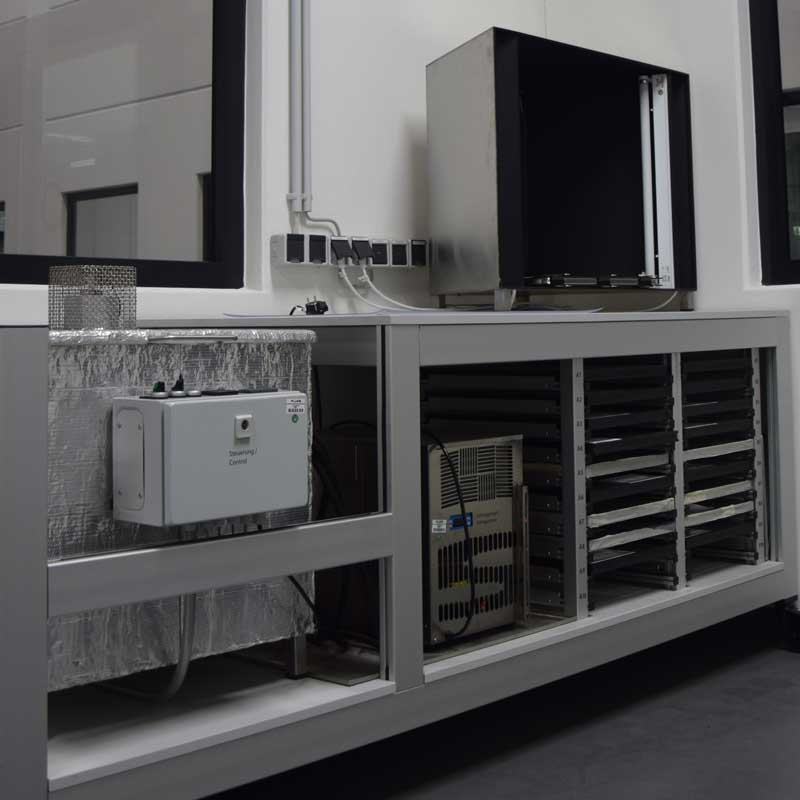
At a glance: The EK fogging system in a specially built rack – with sufficient space for the comprehensive test simulation equipment.
On the left is the actual fogging box with electronic unit and cooling unit. On the right is the IG depot. The inspection unit for visual examination is installed above it.
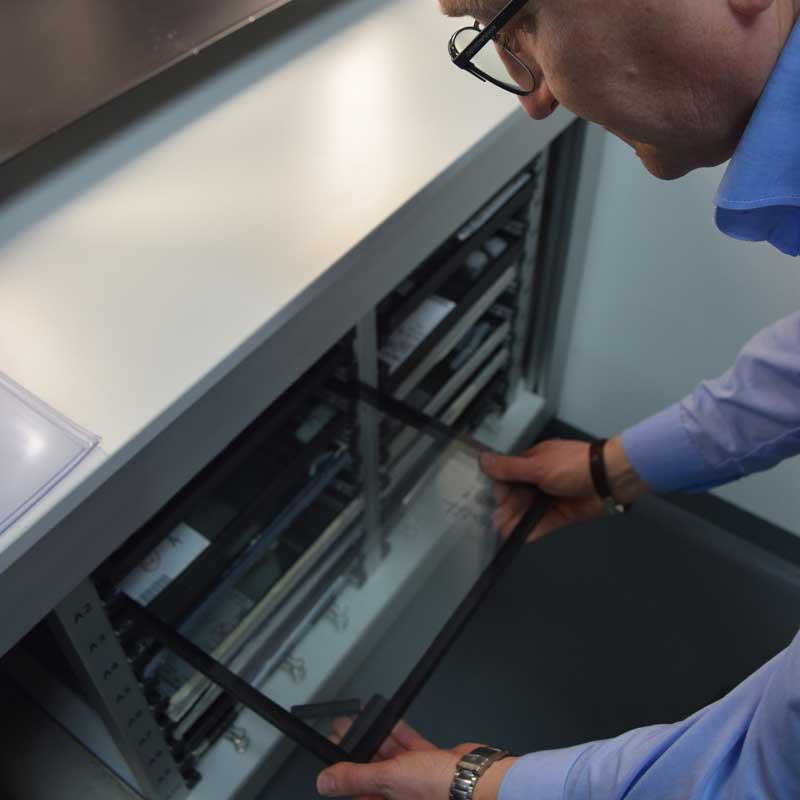
Test units are taken out of the IG depot and prepared for testing.
In order to ensure correct allocation at all times – two identical test units are required and inserted for each test – their precise position is recorded in the IG depot.
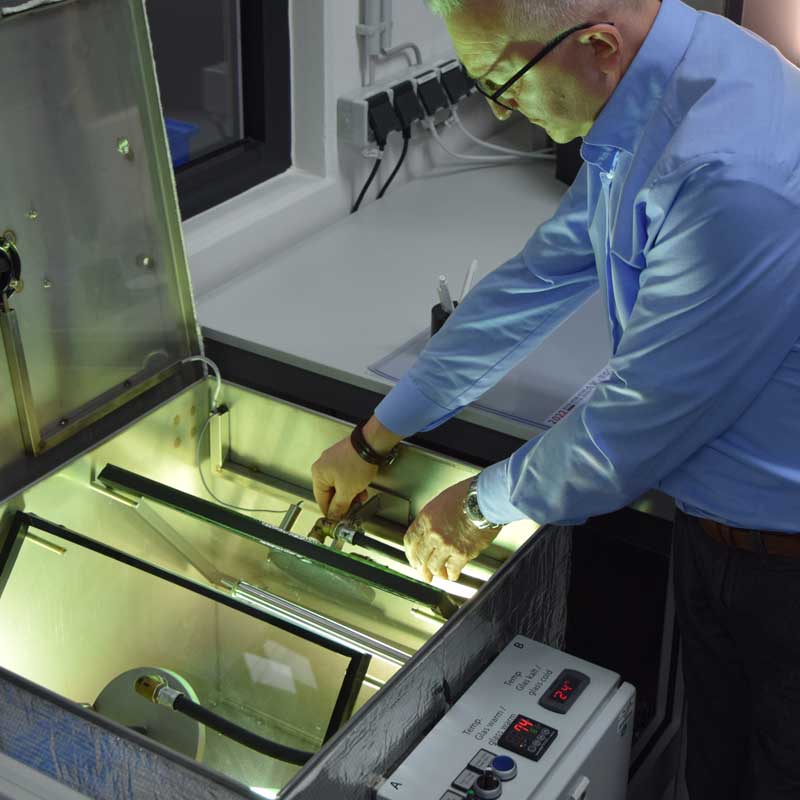
Both test units are carefully inserted in the fogging box.
During the subsequent mounting of the cooling plates, special care is taken to ensure that they are placed absolutely flat on the glass surfaces.
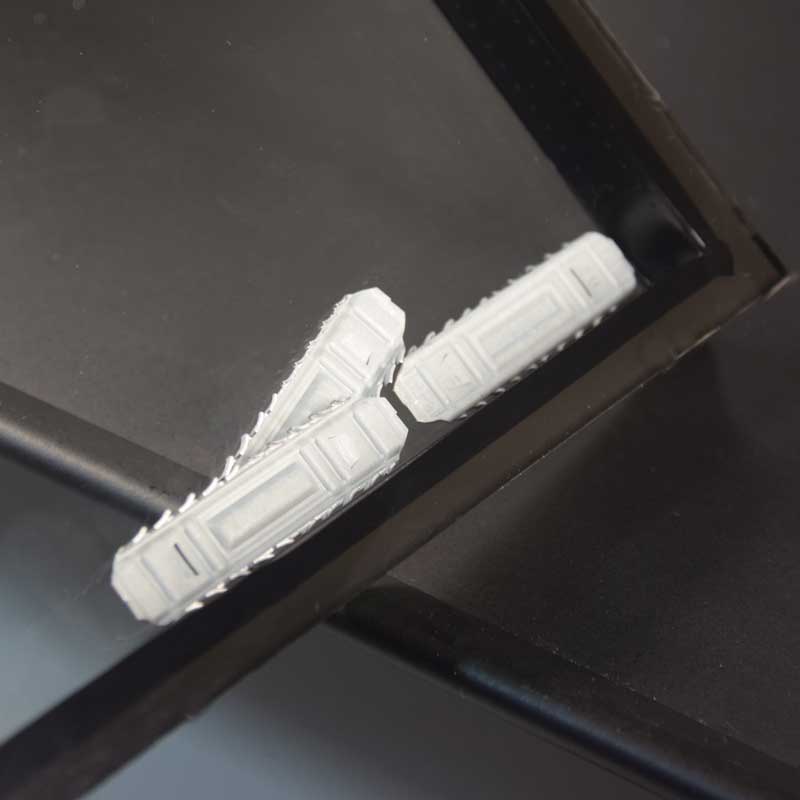
The focus here is on the loose EK products additionally inserted in the space between the panes.
Only after thorough testing do our EK products receive their final approval – which is the prerequisite for our guaranteed promise of no fogging!
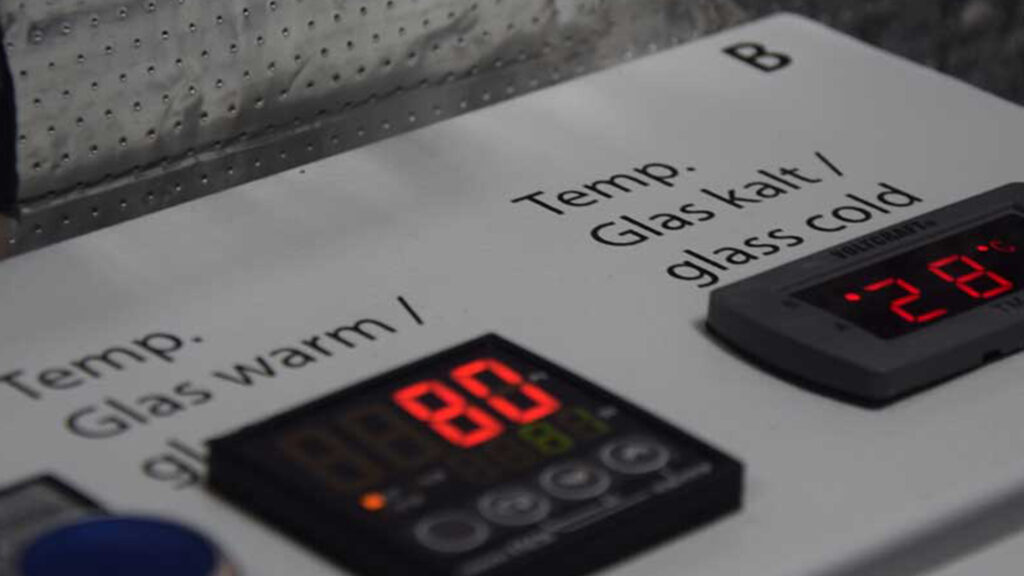
Start of test procedure: uninterrupted, continuous testing for 7 days, i.e. for 168 +/- 4 hours.
The duration of the test is monitored using a timer. A specially converted electronic unit for EK monitors and controls the test temperatures stipulated by the standard.
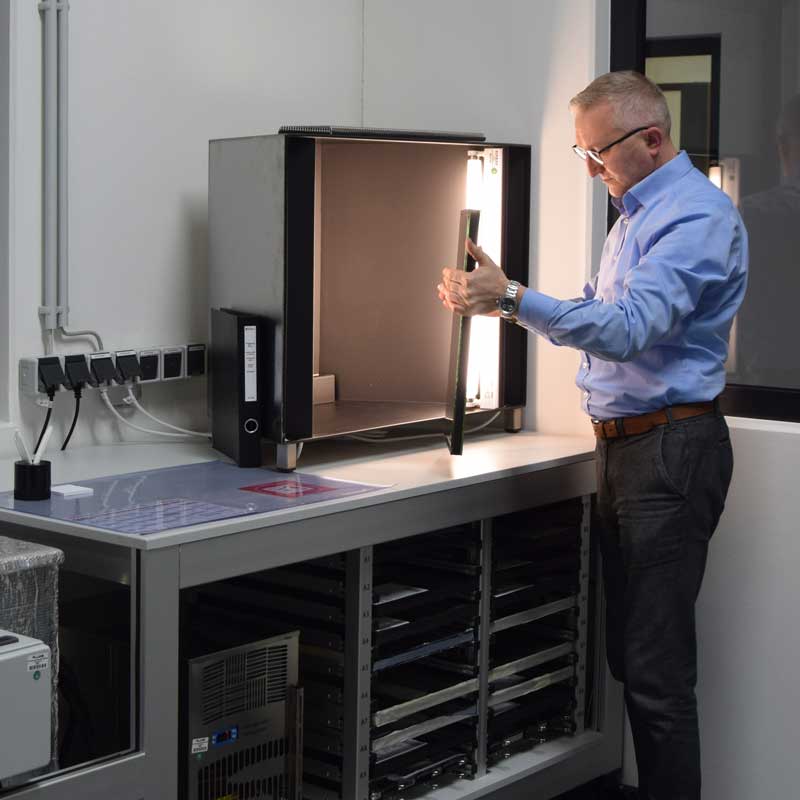
The test specimens are finally examined in the inspection unit from a distance of 1 meter by means of transmitted and reflected light for any interference or scattered light caused by fogging.
The test performed in accordance with DIN EN 12794-:2018, Annex C, is verified with the EK test certificate.

